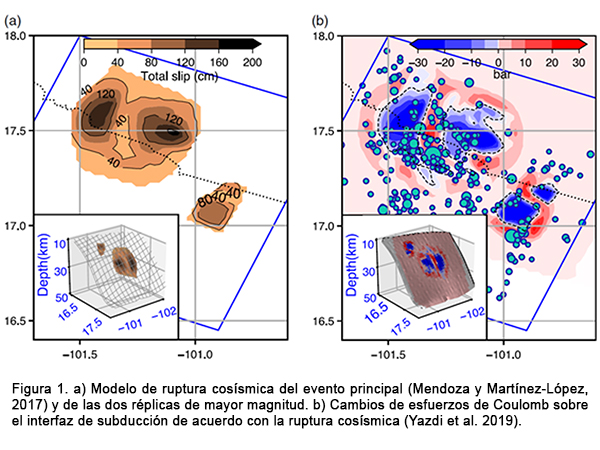Analysis of the 2014 Mw 7.3 Papanoa (Mexico) Earthquake: Implications for Seismic Hazard Assessment
Yazdi, P., Gaspar‐Escribano, J. M., Santoyo, M. A., & Staller, A. (2019). Analysis of the 2014 M w 7.3 Papanoa (Mexico) earthquake: Implications for seismic hazard assessment. Seismological Research Letters, 90(5), 1801-1811. DOI: https: 10.1785/0220190032
Abstract
We analyze the 2014 Papanoa seismic series, located in the Guerrero, Mexico, subduction interface. First, Coulomb failure stress changes because of the mainshock, and the two largest aftershocks are calculated along the interface. The location of aftershock epicenters largely coincides with areas showing positive stress changes. In addition, epidemic‐type aftershock sequence modeling of the series indicates aftershock productivity was not especially large and suggests an increase of background activity rates after the occurrence of the 2014 Papanoa series. This information is used to infer the magnitude‐dependent, smoothed densities of background rates for the study area. Ground‐motion exceedance rates because of interface sources are computed considering different seismicity rate densities and applying the declustering approach. Results show a slight increase of expected accelerations for different exceedance probabilities. Read more

Keywords
Seismic Hazard, Aftershock Series, Coulomb Stresses, ETAS model, Papanoa Earthquake
